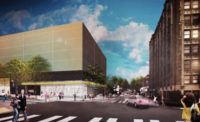MudHoney TBM Launches in Seattle

The Seattle tunnel-boring machine dubbed MudHoney has launched its 2.7-mile route to create a combined sewer outflow tunnel as part of the city's consent decree with the U.S. Environmental Protection Agency.
The 21-ft, 8-in.-dia earth pressure balance machine was lowered into a 107-ft-deep, 80-ft-dia shaft in the Ballard neighborhood in April, the location of the western end of the tunnel and above-ground facilities supporting operations. MudHoney now starts its move east as part of the $570 million King County Ship Canal Water Quality Project to use the underground storage tunnel to reduce the amount of polluted stormwater from rain and sewage flowing into the Lake Washington Ship Canal, Salmon Bay and Lake Union.
By creating a bored tunnel from Ballard to Wallingford in north Seattle, the county wastewater division can store overflow untreated sewage and stormwater until the system can treat the additional loads.
Lane Construction, contractor on the $225-million tunnel portion of the larger $570 million project, plans to have the overflow tunnel ready by 2025. When completed, the tunnel can, on average, prevent 75 million gallons of polluted stormwater and sewage from entering the neighboring waterways, says a firm spokesperson. The tunnel will capture and temporarily hold more than 29.6 million gallons during heavy rains.
The machine, which requires 10 to 15 operators, was built new in 2020—with parts shipped from Germany to Seattle and assembled in Ballard—and is more than 14,200-ft long. The machine includes 18 double-disc cutters, 48 scrapers and 16 bucket cutters, with the ability to remove about 400,000 tons of dirt during the dig, including 105 ft under the Aurora Bridge.
The MudHoney name comes from a rock band formed in 1988 in Seattle.
Smaller tunneling machines will create conveyance tunnels under the Ship Canal between Fremont and Queen Anne and in Ballard.






